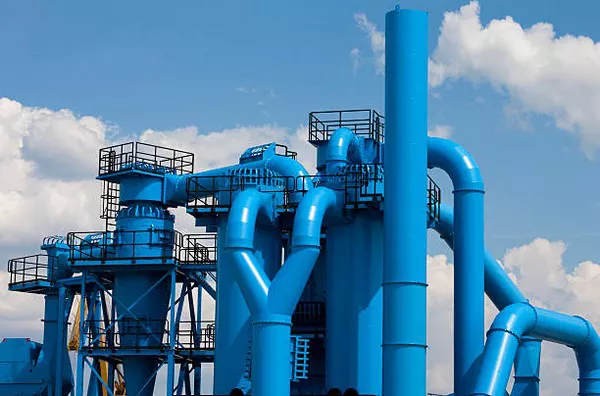Gas-powered air compressors are essential tools in various industries and applications, providing the compressed air needed for a wide range of tasks. From powering pneumatic tools to inflating tires, these versatile machines offer mobility and independence from electrical sources. This article will explore the fundamental mechanics of gas-powered air compressors, their components, operating principles, and maintenance practices to ensure optimal performance.
Understanding Air Compressors
1. What is an Air Compressor?
An air compressor is a mechanical device that converts power (often from a gas engine or electric motor) into potential energy stored in compressed air. This process increases the air pressure and allows it to perform various tasks, such as powering tools, inflating objects, and more.
2. Types of Air Compressors
Air compressors can be categorized based on their power source and mechanism:
Electric Compressors: Powered by electric motors, suitable for indoor use and smaller applications.
Gas-Powered Compressors: Operated by gasoline or diesel engines, ideal for outdoor use and larger, more demanding tasks.
3. Advantages of Gas-Powered Air Compressors
Gas-powered air compressors offer several benefits, including:
Portability: They are not limited by electrical outlets, allowing for use in remote locations.
Power: Gas engines can produce higher horsepower, suitable for heavy-duty applications.
Versatility: They can power a wide range of pneumatic tools and perform various tasks.
Components of a Gas-Powered Air Compressor
1. Gas Engine
The gas engine is the heart of the compressor, providing the power needed to compress air. It typically consists of the following parts:
Cylinder: Where combustion occurs.
Piston: Moves up and down to compress air.
Crankshaft: Converts the linear motion of the piston into rotational motion.
2. Compressor Pump
The compressor pump compresses the air by drawing it in and then forcing it into a storage tank. There are two primary types of compressor pumps:
Reciprocating Pump: Uses a piston to compress air, commonly found in gas-powered compressors.
Rotary Screw Pump: Utilizes two interlocking screws to compress air, typically in larger industrial compressors.
3. Air Tank
The air tank stores the compressed air, allowing for a steady supply when needed. Tanks come in various sizes, depending on the application and required airflow.
4. Pressure Regulator
The pressure regulator controls the output pressure of the compressed air, ensuring it meets the needs of the connected tools or applications.
5. Intake Filter
The intake filter cleans the air entering the compressor, removing dust, dirt, and other contaminants that could affect performance.
6. Exhaust Valve
The exhaust valve releases excess pressure from the system, preventing damage to the compressor and ensuring safety.
How Gas-Powered Air Compressors Work
1. Starting the Engine
The process begins with starting the gas engine, which typically involves:
Ignition: Fuel is ignited in the cylinder, causing a combustion reaction.
Power Stroke: The explosion pushes the piston down, generating power.
2. Compression Cycle
The compression cycle involves several steps:
Intake Stroke: As the piston moves down, it creates a vacuum that draws air into the cylinder through the intake valve.
Compression Stroke: The piston then moves back up, compressing the air. The intake valve closes, and the air is pressurized.
Power Stroke: The pressurized air is forced out through the exhaust valve, while the engine continues its cycle.
3. Air Storage and Distribution
Filling the Tank: The compressed air enters the storage tank, which stores it until needed.
Using Compressed Air: When a tool or application is connected, the pressure regulator ensures the right amount of air is supplied.
Key Specifications and Considerations
1. CFM and PSI Ratings
CFM (Cubic Feet per Minute): Measures the airflow rate. Higher CFM ratings indicate the ability to power more tools simultaneously or perform tasks more efficiently.
PSI (Pounds per Square Inch): Indicates the pressure level of the compressed air. Different tools require varying PSI levels for optimal operation.
2. Fuel Type
Gas-powered compressors typically run on gasoline or diesel. The choice depends on availability, cost, and the specific demands of the application.
3. Size and Portability
Consider the size of the compressor based on your intended use. Larger compressors may provide more power but can be less portable.
Maintenance Tips for Gas-Powered Air Compressors
1. Regular Oil Changes
Maintaining the engine is crucial for longevity:
Frequency: Change the oil as recommended by the manufacturer, typically after every 50-100 hours of operation.
Type: Use oil that meets the engine’s specifications, usually indicated in the owner’s manual.
2. Air Filter Maintenance
Cleaning: Regularly clean or replace the intake filter to prevent dirt and debris from entering the system.
3. Check for Leaks
Inspect hoses, fittings, and connections for any signs of air leaks, which can decrease efficiency and performance.
4. Drain the Tank
Water Accumulation: Condensation can build up in the tank, leading to rust. Drain the tank regularly to remove any moisture.
5. Inspect Belts and Hoses
Check belts for wear and hoses for cracks or damage. Replace any components that show signs of deterioration.
Troubleshooting Common Issues
1. Engine Won’t Start
Check Fuel Levels: Ensure there’s enough fuel in the tank.
Inspect the Spark Plug: A faulty or dirty spark plug may prevent ignition.
2. Low Air Pressure
Check for Leaks: Inspect all connections and hoses for leaks.
Adjust the Pressure Regulator: Ensure it’s set correctly for your application.
3. Excessive Noise
Inspect for Loose Parts: Loose bolts or components can create noise. Tighten as necessary.
Check the Muffler: A damaged or clogged muffler can contribute to noise levels.
Conclusion
Gas-powered air compressors are invaluable tools that provide the compressed air necessary for a variety of applications. Understanding how they work, their components, and maintenance requirements is essential for maximizing performance and longevity. By choosing the right compressor and adhering to best practices, you can ensure efficient operation and reliable service for all your pneumatic needs. Whether you’re a DIY enthusiast or a professional, mastering the ins and outs of gas-powered air compressors will enhance your productivity and capabilities.
Related topics:

